Reggio-Inspired
 Amplify is a Reggio-inspired school; the learning and living environment is child-originated and teacher framed. An emergent curriculum encourages learning experiences to be project-based and guided by the child’s interests. Natural materials and surroundings are emphasized and there are many opportunities to extend learning through artistic involvements.
Amplify is a Reggio-inspired school; the learning and living environment is child-originated and teacher framed. An emergent curriculum encourages learning experiences to be project-based and guided by the child’s interests. Natural materials and surroundings are emphasized and there are many opportunities to extend learning through artistic involvements.
- Reggio operates as mixed-age settings and has teachers who act as collaborators in the children’s learning: they are co-learners.
- Teachers (Amplifiers) guide the children and are alongside them to love, play, explore, research, observe, facilitate and document different stages of their work.
- Project work is based on the children’s interests and is investigated until they naturally travel in a new direction.
- The environment is considered to be the third teacher, and is designed for learning and exploration that fosters the development of the child’s “hundred languages.”
- The whole school environment is an extension of a child’s world, designed to be a beautiful home-like space that is heartening and respectful to the child who will spend many hours of their childhood at Amplify.
- Reggio-inspired schools do not follow a pre-determined curriculum; instead, a child’s learning and care-teaching is supported through providing experiences, environment, and materials that allow them to engage their hundred languages.
Guiding principles of the Reggio-Emilia Inspired approach:
We hold a strong and optimistic image of the child who is born with many resources and extraordinary potentials.
The 100 languages are a metaphor for the extraordinary potentials of children.
Participation values and fosters dialogue and the sense of belonging to a community.
The flow of quality information via documentation introduces parents to a quality of knowing that tangibly changes expectations.
Research represents one of the essential dimensions of life of children and adults, a knowledge-building tension that must be recognized and valued.
http://reggioalliance.org/narea/
The Hundred Languages
No way. The hundred is there.
The child
is made of one hundred.
The child has
a hundred languages
a hundred hands
a hundred thoughts
a hundred ways of thinking
of playing, of speaking.
A hundred always a hundred
ways of listening
of marveling, of loving
a hundred joys
for singing and understanding
a hundred worlds
to discover
a hundred worlds
to invent
a hundred worlds
to dream.
The child has
a hundred languages
(and a hundred hundred hundred more)
but they steal ninety-nine.The school and the culture
separate the head from the body.
They tell the child:
to think without hands
to do without head
to listen and not to speak
to understand without joy
to love and to marvel
only at Easter and at Christmas.
They tell the child:
to discover the world already there
and of the hundred
they steal ninety-nine.
They tell the child:
that work and play
reality and fantasy
science and imagination
sky and earth
reason and dream
are things
that do not belong together.
And thus they tell the child
that the hundred is not there.
The child says:
No way. The hundred is there.
-Loris Malaguzzi (translated by Lella Gandini)
Founder of the Reggio Emilia Approach
